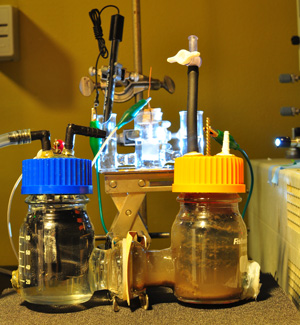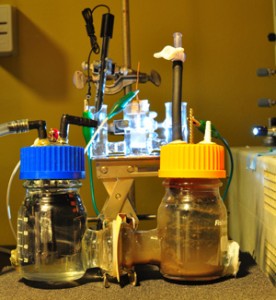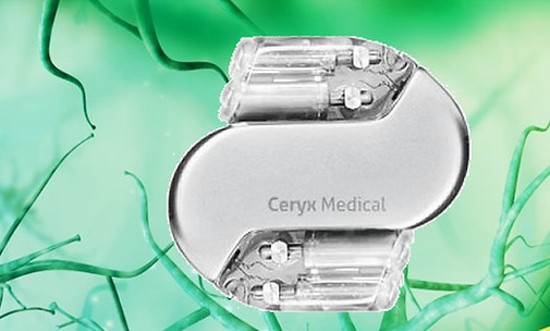October 17, 2013 – In the last week researchers at University of California Santa Cruz published a paper describing a self-sustaining hydrogen gas production technology that creates the fuel from solar light and wastewater. Called a PEC-MFC, an acronym for PhotoElectrochemical Cell-Microbial Fuel Cell, the bio-battery combines bacteria and photochemistry. The biofuel cell generates energy from bacteria breaking down the biomass contained within wastewater. This energy combines with a photochemical cell to split water into its hydrogen and oxygen.
The PEC-MFC is a vast improvement over current technologies used to render hydrogen from water because the microbial fuel cell provides electricity continuously in a closed system. Current hydrogen generating technologies always require additional energy input from an external power source.
The bacteria used in the PEC-MFC is shewanella oneidensis, an anaerobic organism that usually is found in poorly aerated soils and sediments or the deep ocean. This bacteria has been used for bio-remediation to break down heavy metals from industrial waste. It is its electrochemically dynamic properties that make it an attractive choice for the device. Researchers noted that hydrogen production decreases after a period of time but by simply replenishing the wastewater the bioreactor starts pumping out more electricity and more hydrogen gas.
The current prototype (seen below) is running in the UC Santa Cruz lab but its inventors have ambitious plans to begin scaling it to industrial levels. They will start with a next generation 40-liter device which will be set up outside a water treatment plant so that it can use natural sunlight and will be fully integrated to continuously receive wastewater.

















